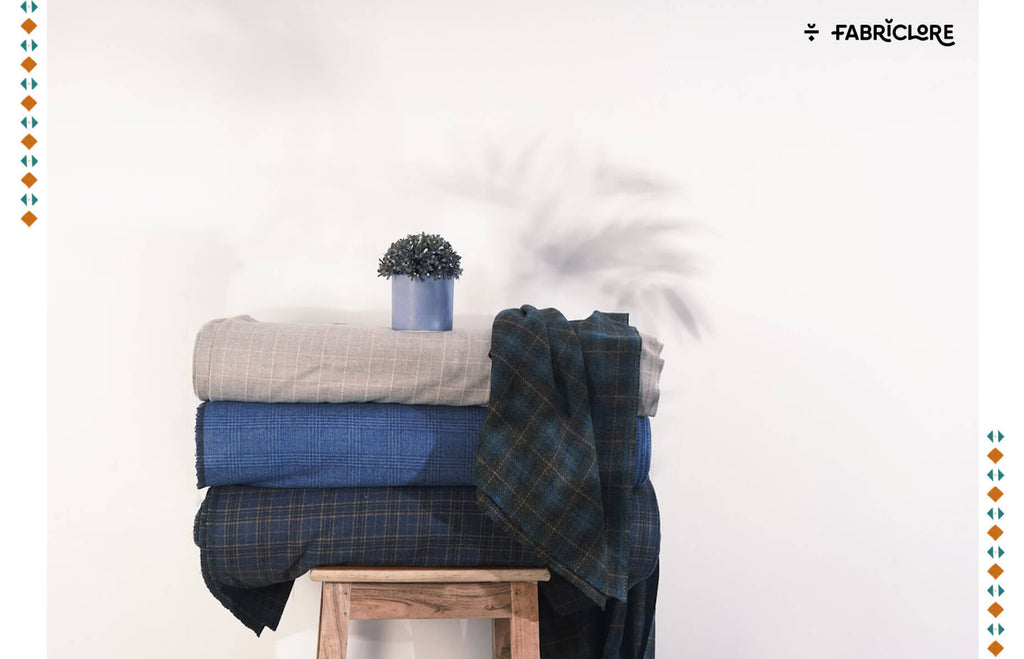Are you a crafty person? Do you like to sew and make your own clothes, blankets, towels, curtains, and other home fabrics? If so, then you probably already know that there are multiple different types of fabric available for crafting projects. In the world of fabrics, there are many different types, such as linen, silk, nylon, and wool.
Understanding these subtle differences between the cotton fabric and wool fabric can help you determine which is better suited for your project. If you aren’t yet sure what the differences between cotton and wool fabrics are, this article will provide all the details you need to know about both fibers.
You’ll also learn about their specific uses in various industries, from home goods to apparel manufacturing companies and everything in between!
What Is Cotton Fabric?

Cotton fabric is a natural fabric made from the fibers found in the cotton plant. The cotton plant is a very common plant that grows in warm climates around the world. The majority of the cotton grown and harvested for fabric today comes from countries like India, China, and the United States. Cotton fabrics are typically used for clothing, bedding, and home decor items such as tablecloths and curtains. They are also used for things like towels, bags, and certain other items that require durability. Cotton fabrics are made from threads that are usually dyed with various colors, including red, blue, green, yellow, black, gray, and many others. The fabrics are easy to clean and tend to be very affordable. They are also breathable, along with being comfortable to wear as they are not too thick or too thin.
What Is Wool Fabric?

Wool fabric is a natural fabric that is made from the fleece of sheep. Wool fabric is one of the oldest types of fabrics that humans have ever used. The process of making wool fabric goes all the way back to the Stone Age when people used to spin and weave wool into fabric by hand. Today, modern manufacturing techniques have made it easier to produce wool fabric on a larger scale. Wool fabrics are used for a variety of different items, including clothing, bed sheets, blankets, and home decor items such as tablecloths, curtains, and rugs. They are also used in the manufacturing of certain items like bags, carpets, and knitting needles. They are not always dyed with colored pigments. However, sometimes wool fabrics are sheared with colored dyes during the shearing process. This is often done to create a patterned look on the fabric, like plaids, stripes, or checks.
Differences Between Cotton And Wool Fabrics

There are many subtle differences between cotton and wool fabrics that you should be aware of before making your selection. These differences are important to keep in mind so that you can choose the best fiber for your particular project. -
- Texture: One of the most important differences between cotton and wool fabrics is the texture. Cotton fabric is a smooth fabric, while wool is a bit more coarse and slightly fuzzy. The texture of a fabric is extremely important because it can affect how a garment drapes on the body.
- Breathability: Cotton is more absorbent and does not wick moisture as well as other materials, so it gives the impression of being less breathable than other fabrics, particularly when the weather is humid. Whereas wool is superior to other fibers in terms of its ability to wick moisture and prevent it from penetrating the interior structure of the garment.
- Softness: Cotton is the softer material in the industry. With its finer fibers, cotton will always feel more comfortable on the skin than wool, no matter how thick or how many treatments it has undergone.
- Weight: The weight of cotton and wool varies depending on the type. In order to create a variety of yarn and fabric weights, manufacturers may spin the fibers into various diameters, then weave, knit, or crochet with one or more threads at a time. Wool has a greater propensity to weigh more than cotton does.
- Moisture-wicking: Moisture-wicking indicates that the fibers of fabric can draw moisture from your skin, such as perspiration, and transport it to the fabric's surface, where it may evaporate. Cotton's high absorption rate makes it poor wicker of moisture. Thin cotton will allow water to evaporate more quickly than thick cotton, but wool will contain less water, to begin with. Wool fabric repels water better than cotton because it pulls water away from your skin and into the air.
The Final Verdict
Cotton fabric is a natural fabric made from the fibers of the cotton plant. It is commonly used for clothing, bedding, and other everyday items. It is also used for certain items that require heavy-duty durabilities, such as luggage, backpacks, and bags. Wool fabrics are made from the fleece of sheep and are commonly used for clothing, blankets, tablecloths, curtains, and home decor items. They are also used for bags and athletic wear. Overall, cotton fabrics are very affordable and easy to clean, whereas wool fabrics are more durable and designed for daily wear.
Here's a video of Cotton vs. Wool by Carl Murawski
We also happen to be a magnet for suggestions, and would love to catch yours….throw us yours on hello@fabriclore.com





